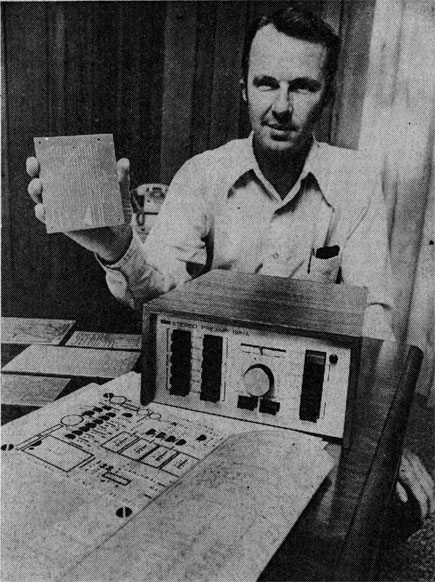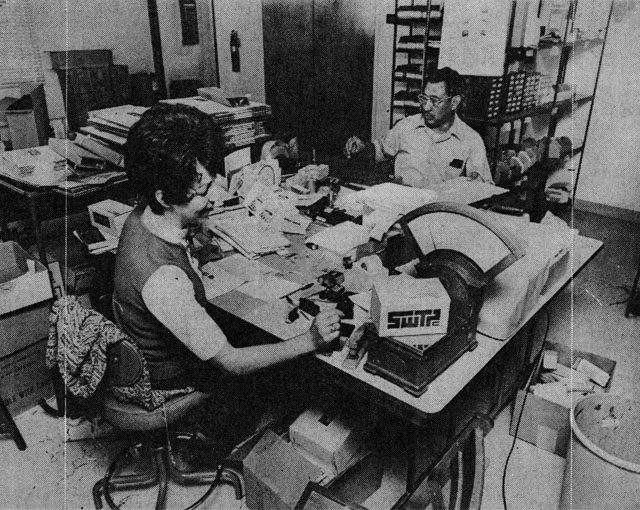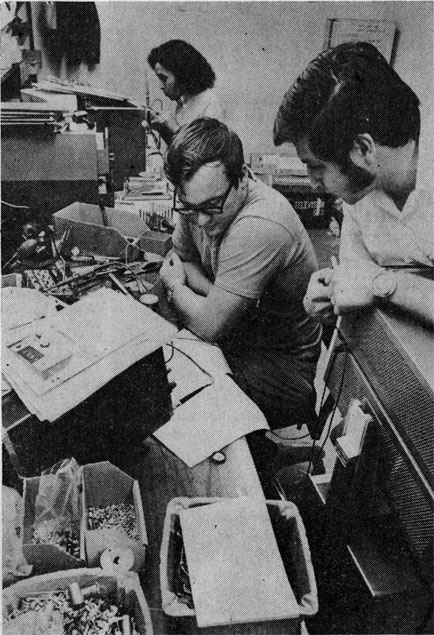| .Many a would-be writer dreams of free-lancing his way to a fortune,
but few would-be business owners consider freelance writing as a means
to their end.
Daniel Meyer did. Owner of Southwest Technical Products Corp., Meyer
built his mail-order business from scratch to more than $1 million in
sales in six years.
Born in New Braunfels and raised in San Marcos, where he earned a
bachelor's degree in mathematics and physics from Southwest Texas State
University, Meyer worked for six years for Southwest Research Institute
in the electrical engineering department.
Meyer says he wrote a few articles for Popular Electronics and Radio
Electronics magazines on items such as amplifiers and "electronic
gadgets". The article would wind up by noting that some parts needed to
put together the gadgets were available from Meyer.
"When I realized how many people would pay me a couple of dollars for
a circuit board, I figured they'd also pay a little more for a whole kit
to make something," Meyer recalls.
"Luckily I was right. I started this business in 1964. For the first
five or six years we didn't have to advertise a bit. No one had ever
done what I did before, but it worked," Meyer adds.
Meyer wrote an average of four articles per year for either of the
two widely circulated electronics magazines. Most of the articles were
accompanied by a picture on the cover of the magazine.
This arrangement developed as a double source of income-Meyer was
paid for writing the article, which in turn generated sales for his
budding company.
The business quickly outgrew the Meyer garage and is presently
located in 18,000 square feet of buildings on three acres at 219 W.
Rhapsody St.
"Our sales were doubling every year and we'd run out of space every
time we'd get some new machines in," recalls Meyer. "We've built out
here about four times now".
"Every time we put up a new building we say, 'God, there's all kinds
of room,' but it sort of fades away. Things are filling up again now,"
he adds.
Meyer counts his business as fortunate in several respects. He could
build as his sales increased, for example, and add employees only as
necessary.
A market already existed for Southwest Technical Products, and Meyer
could usually offer his items at lower cost than competitors' items were
offered at retail counters in stores.
"This business has also been fortunate in that we get the money in
our hot little hands before we send out the product. We don't have to
worry about depending on one or a few large customers who might go broke
or be slow paying," says Meyer.
Meyer adds that the recession of 1970 didn't hurt his company too
much. "Instead of sales increasing more than 20 per cent, that year they
only increased about three per cent-which was nice, it gave us a little
breather," he says.
The office staff sends out thousands of catalogs each year and Meyer
says the company also has begun to advertise, though he still writes an
occasional article for the popular magazines.
Letters and orders come in at the rate of more than 100 per day, and
an average of 100 kits are shipped out daily, Meyer says. Though the
company lets all checks clear their respective banks before filling the
orders, Meyer says bad checks represent only a tenth of one per cent of
sales.
"More than 50 per cent of our market seems to be made up of young
people high school and college age-who enjoy working on the kits we
offer. They want the stuff, and they aren't about to take a chance of
not getting it by sending a bum check," Meyer theorizes.
The language in the company's catalog is written to appeal to this
youth market. The most recent issue notes that customers have written
expressing doubts about the company's products because the prices are
low.
"The truth is that we are setting our prices at a fair level for our
way of selling these kits to you," states the catalog. "Since you are
buying by mail directly from the manufacturer you are saving at least
one third since there is no retailer's markup."
"If you don't believe this, compare our kits with others on the
market. This should make it obvious who the rip-off is," concludes the
catalog.
Another section assures customers that "no surplus, no rejects, or
reduced specification garbage is ever used in a SwTPC kit."
This approach sells a lot of product. Meyer says sales have topped $1
million for the past two years and are running well this year.
Two items in the catalog carry the name of Popular Electronics
magazine on them, but the majority carry the company's SwTPC initials.
In addition to preamps and amplifiers the company offers guitar
amplifiers, psychedelic strobe lights, electronic musical instruments,
and color organs which shine flowers of various colors on a glass screen
according to the pitch of the music connected to the organ.
Such currently popular items as burglar alarm systems and battery
chargers are also offered. The current catalog also offers a product
Southwest Technical Products pioneered, a digital car tachometer which
indicates revolutions per minute of a six-cylinder or eight-cylinder
engine in lighted digits rather than a needle on a dial.
"We aren't getting in too many orders for it yet," says Meyer, "but
it's still new and we still think it's a good product. You win some and
you lose some, but as long as you don't lose too often you're all
right."
Meyer says research and development don't cost the firm too much
because it already makes its own circuit boards, and most of the
electronic parts are usable in several items already in the product
line.
"We also have a real good time at what we're doing," Meyer asserts.
"We were really interested in seeing what type of circuit that digital
tachometer would need."
The company adds an average of six to eight new products to the line
each year. One that bombed a while ago was an electronic dice game.
"We had it wired and programmed to give the same odds as throwing the
cubes," says Meyer. "All you had to do was press a button and the lights
on two panels would show what you 'threw.' We figured anyone liking to
gamble would have to have one, but it was a total disaster."
Meyer says that in retrospect it seems gamblers and casual dice
players enjoy the feel of the ivory in their fists, the clicking sound
as they shake the cubes, and the physical action of throwing dice.
Demand remains strong for the other kit items in the company's line,
however, and Meyer says he may move into another market.
"We know there are more people who'll buy assembled products than the
kits that we sell now. We'll move into that area as we can handle it,"
he says.
|


